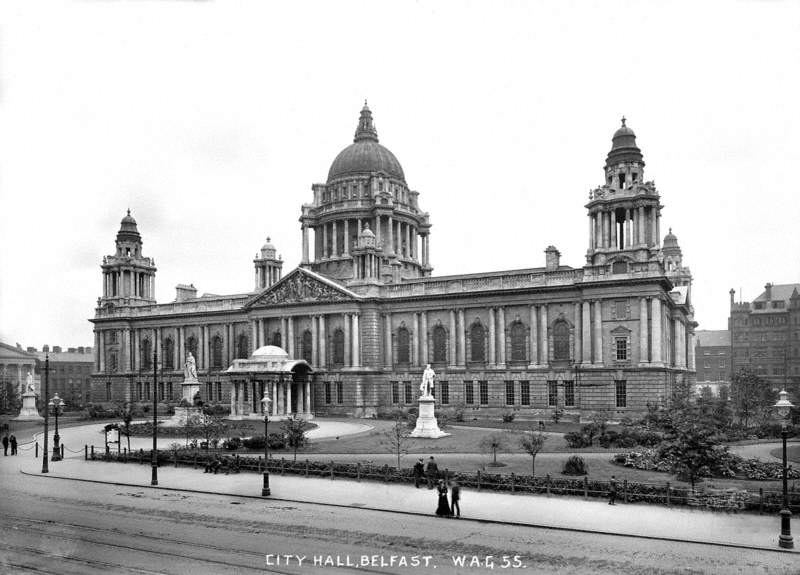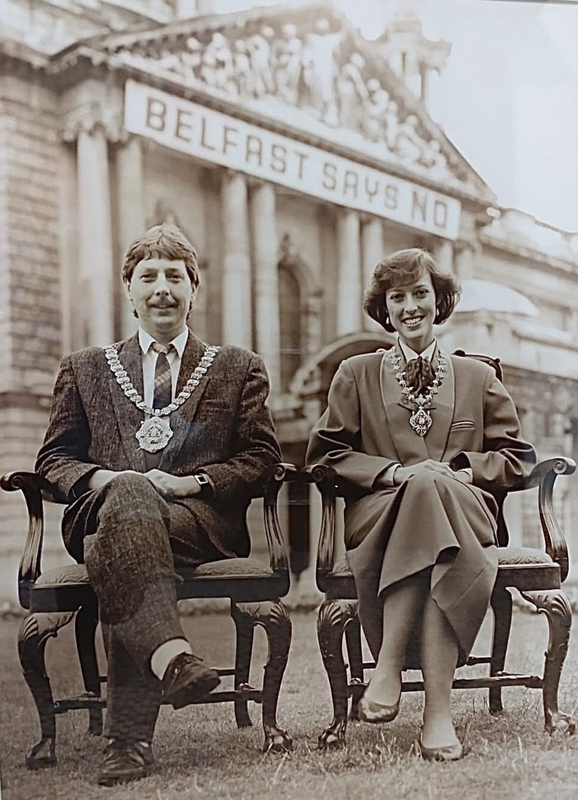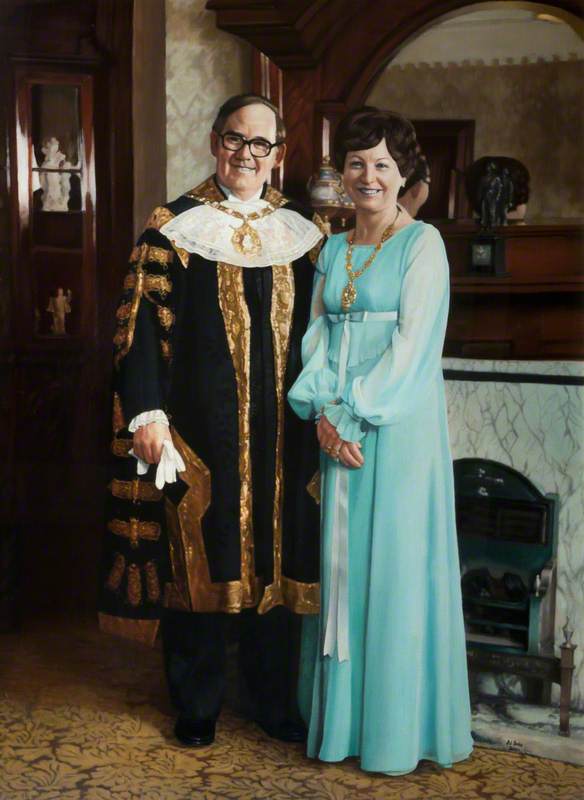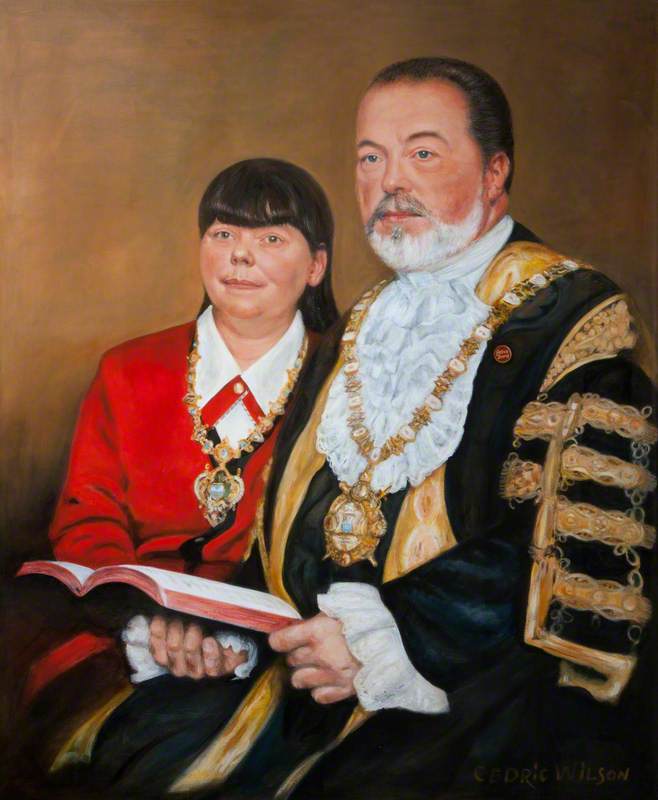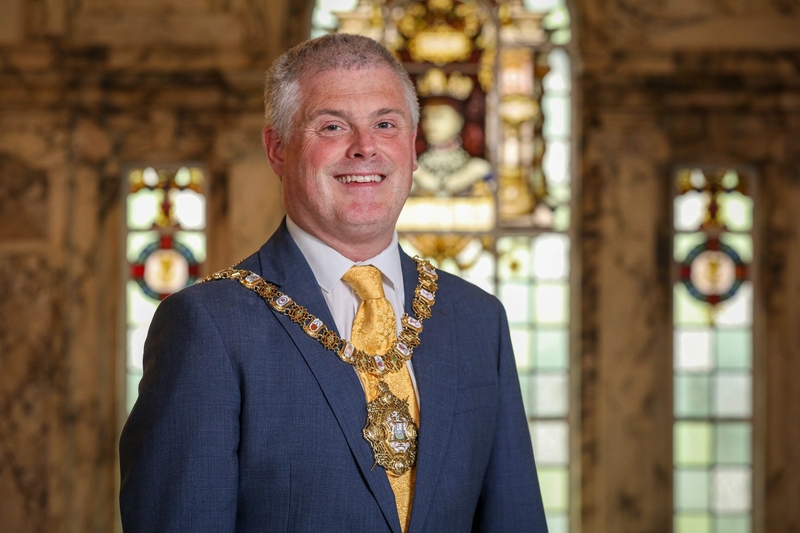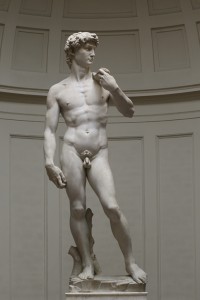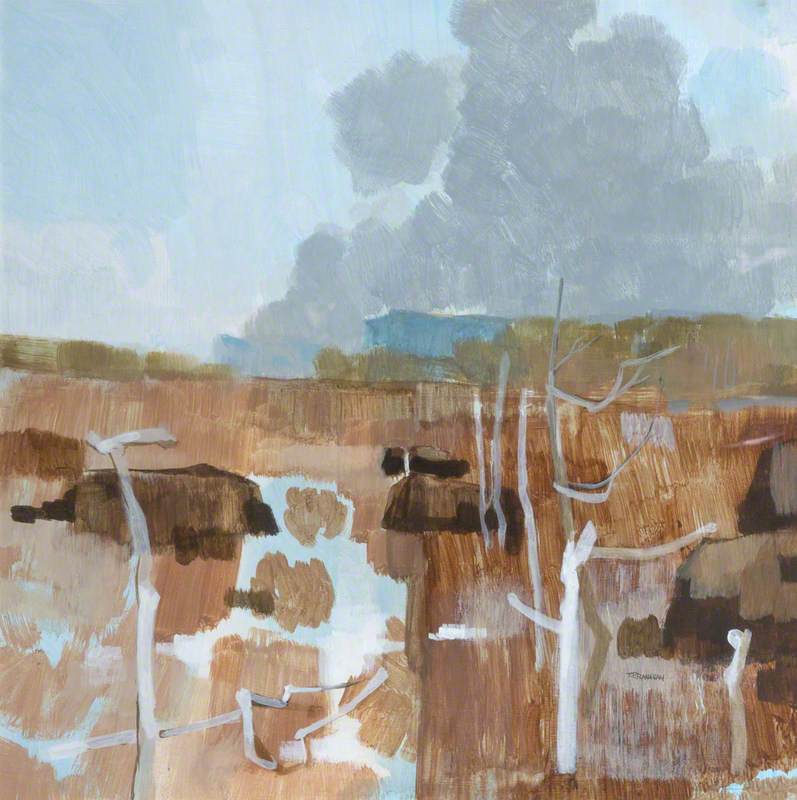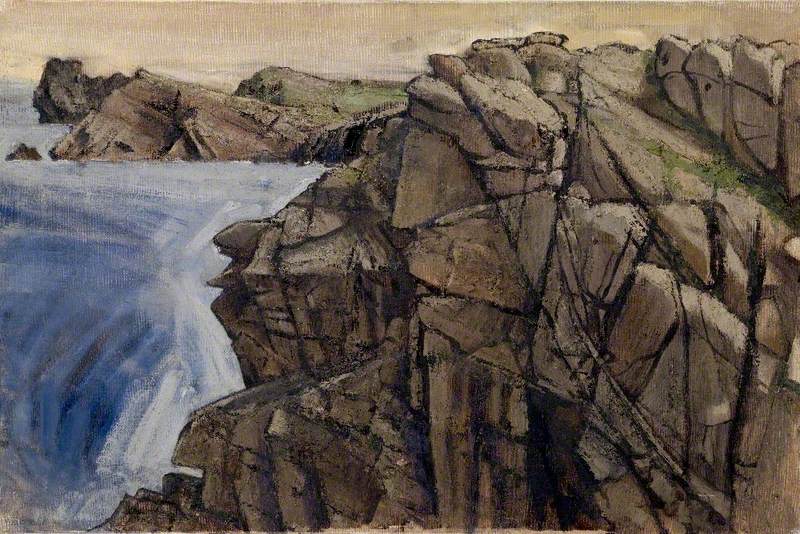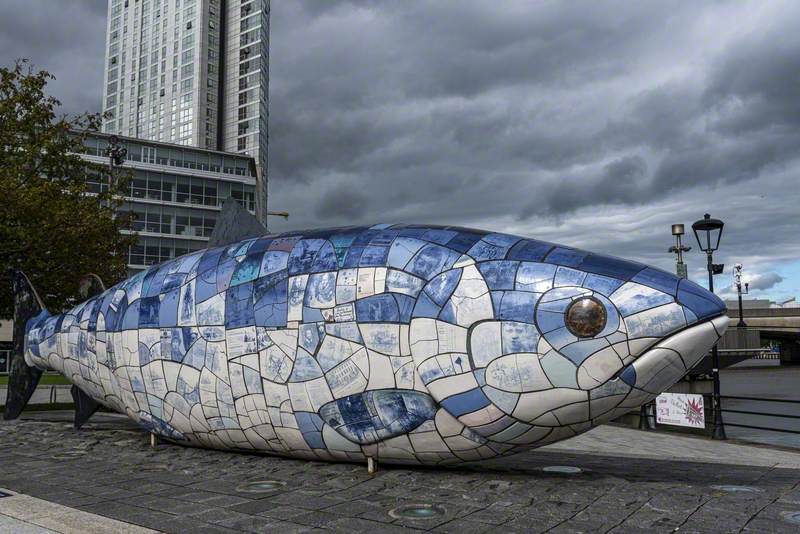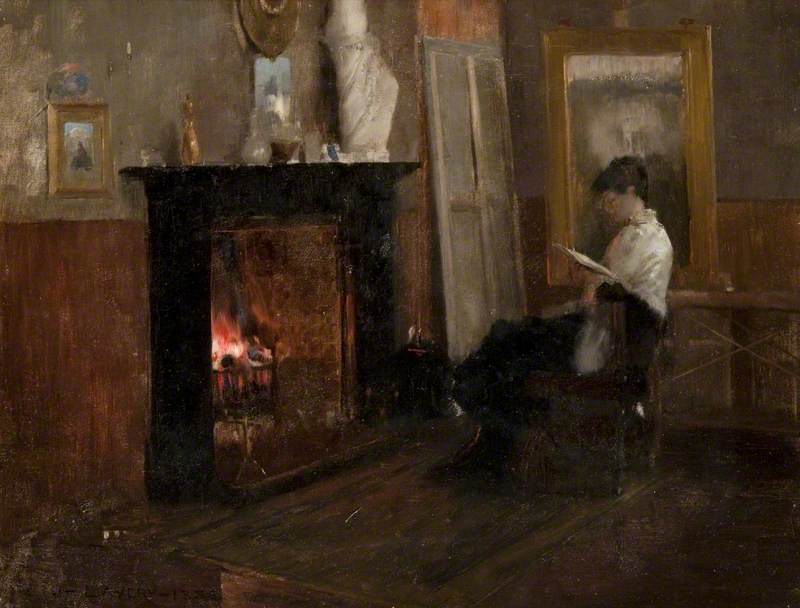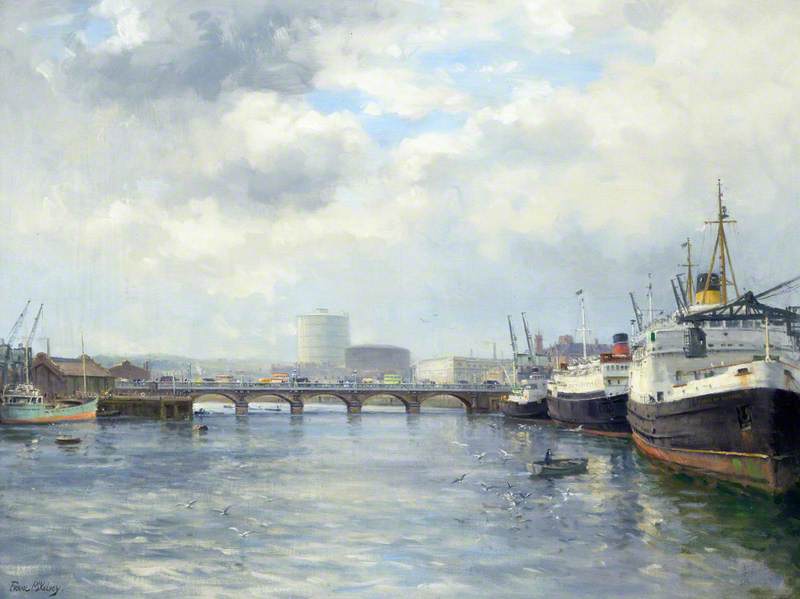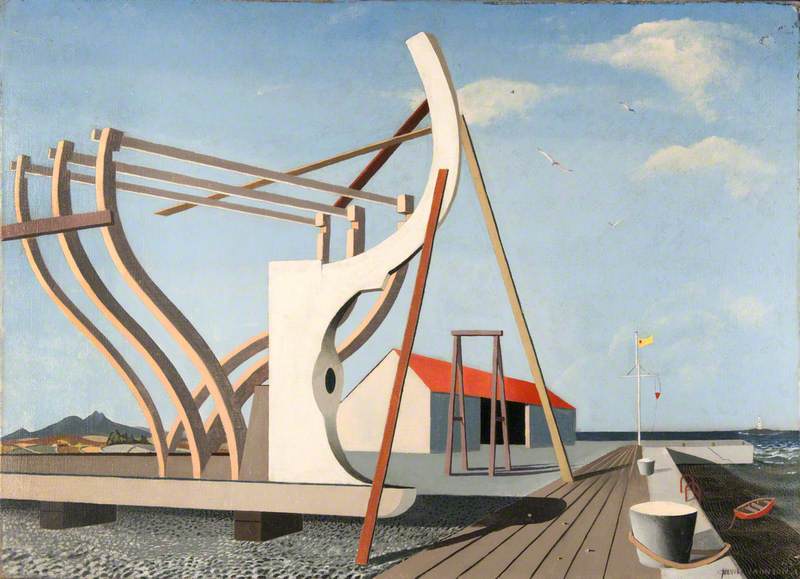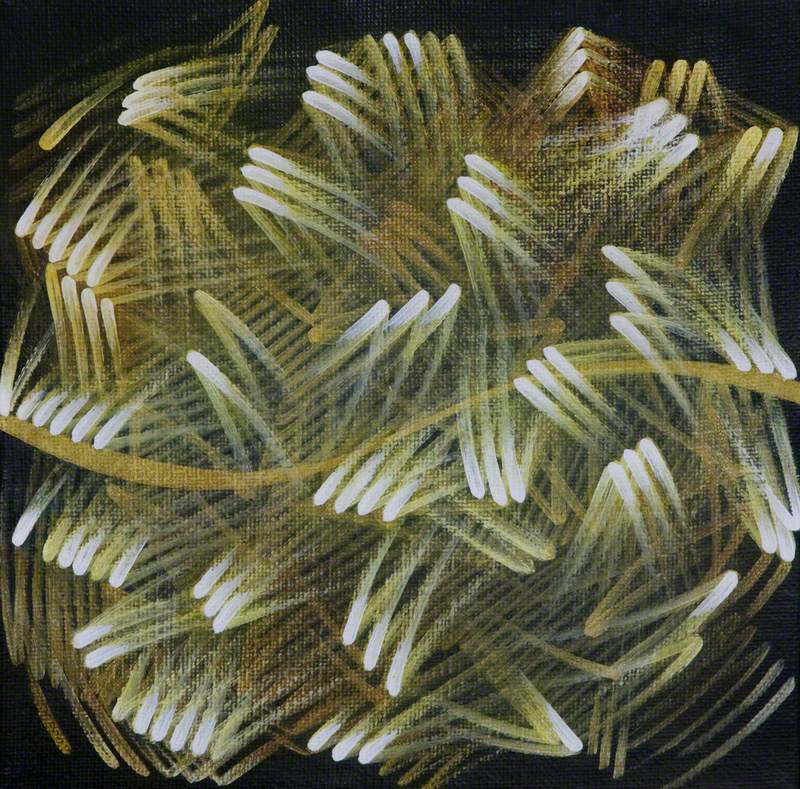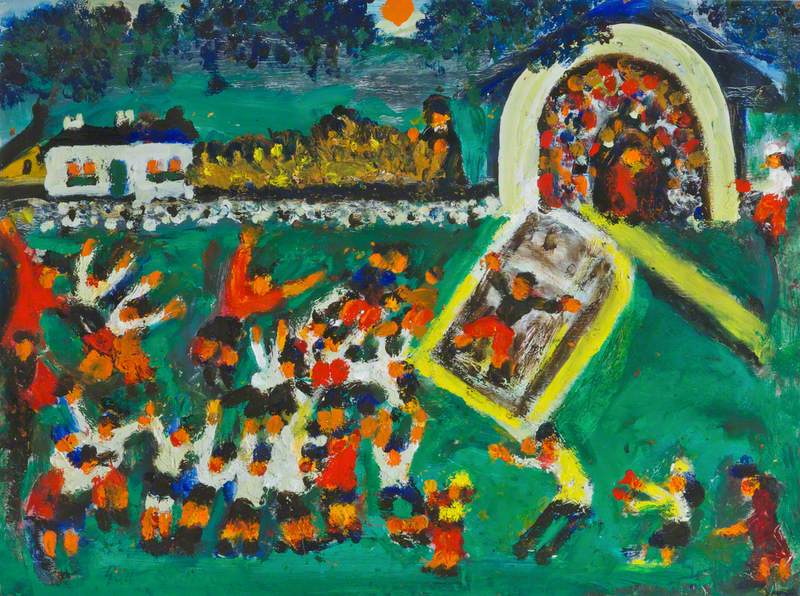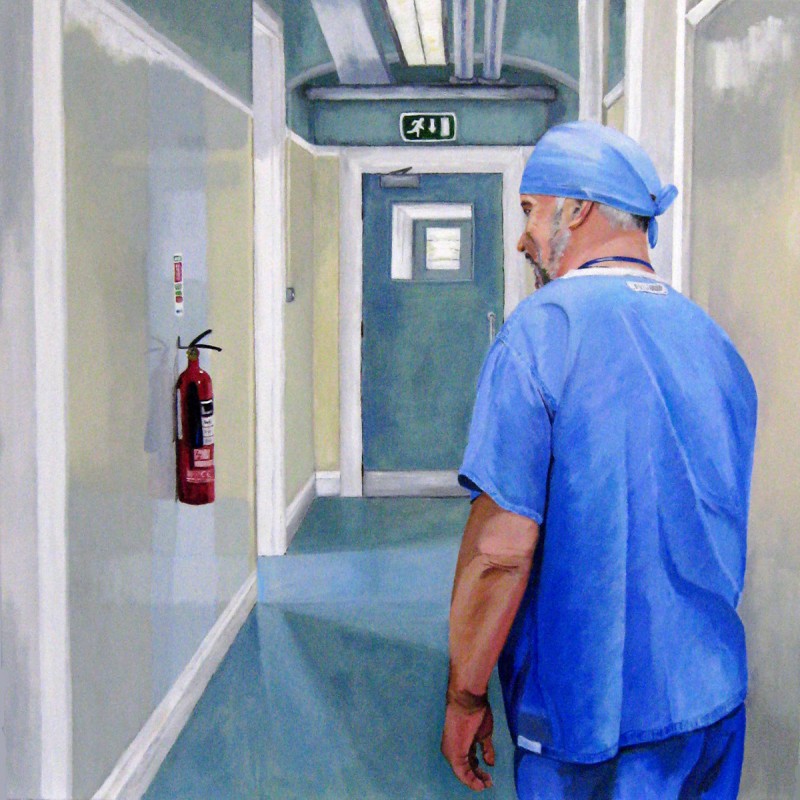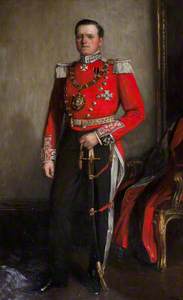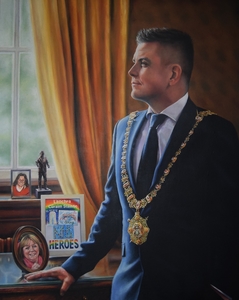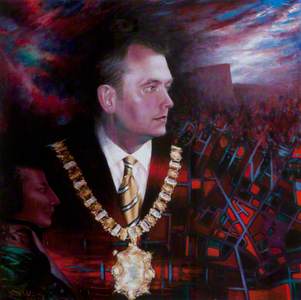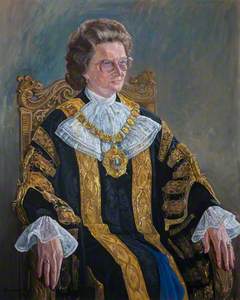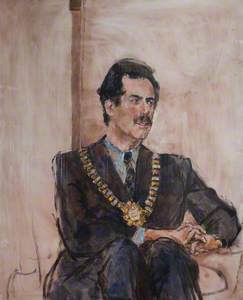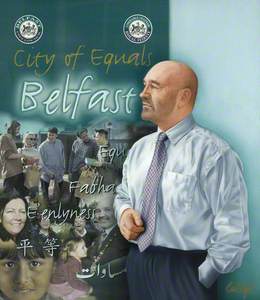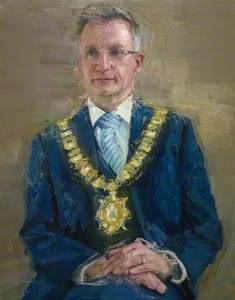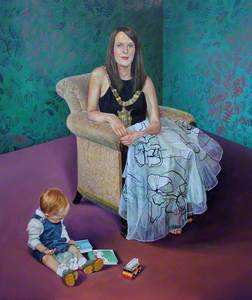Belfast City Council in Northern Ireland remains the only Council in the region to commission a portrait of its Lord Mayor annually. The tradition remains a unique marker of the political, social and artistic changes in the life of the city, and the collection is on display as well as being accessible through a digital interface which contains extensive information on sitters and artists.
The position of Lord Mayor of Belfast originated in 1613 as the Sovereign of Belfast and was restyled as Mayor in 1842 and Lord Mayor in 1892, before being finally changed to The Right Honourable, The Lord Mayor in 1923. The Lord Mayor is the ceremonial leader and chairperson of Belfast City Council, elected annually from and by the city's 60 councillors.
Most of the early portraits in the collection hang in corridors that are rarely visited by the public and these works are dominated by male Mayors from a Unionist background. After the partition of Ireland, for 61 of the first 67 years, the role was held by the Ulster Unionist Party (UUP), which was founded as the Ulster Unionist Council in 1905 and seeks to maintain Northern Ireland's union with Britain and to protect the British citizenship of residents of Northern Ireland.
These paintings are large in scale, and the subjects, who are sometimes in military uniform or in business attire, are usually standing and given an air of authority.
Earl of Shaftesbury, Anthony Ashley-Cooper, Lord Mayor of Belfast (1907)
John Lavery (1856–1941) 
At least one portrait is produced every year, so the scale of these changed over time to accommodate more paintings in each corridor.
Robert James McMordie, Lord Mayor of Belfast (1910–1914)
Henrietta Rae (1859–1928) 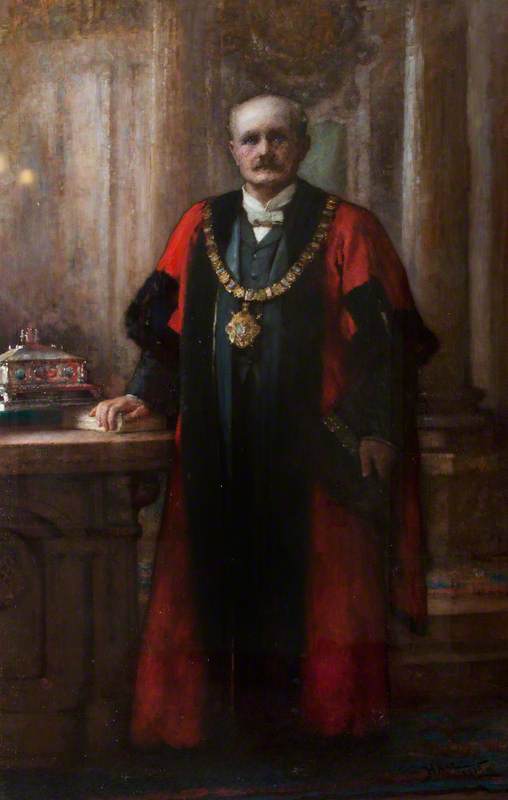
This run of Unionist Mayors was broken by David Somerville Cook, who was Lord Mayor from 1978 to 1979. He was a founding member of the Alliance Party, a centrist political party that aims to break down sectarian divisions between Catholics and Protestants, and has a neutral stance on the constitutional issues of Northern Ireland. It has often been linked with the Liberal Democrats. For his portrait, David Cook chose Neil Shawcross, who was also a lecturer at Belfast School of Art, for a contemporary, fresh depiction of the Lord Mayor's Office, one that was significantly different from the portraits of the past, and which nodded towards an optimistic, non-sectarian future.
David Somerville Cook, The Right Honorable, The Lord Mayor of Belfast (1978–1979)
Neil Shawcross (b.1940) 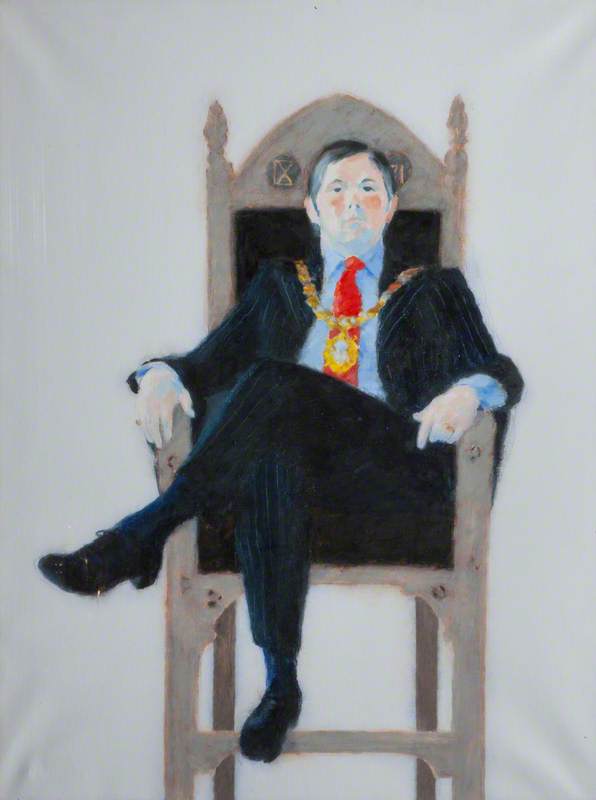
In one early portrait of a Lady Mayoress, believed to be Margaret Morrow Carson McCammond (1894–1895), she is depicted on her own, wearing the corseted dress of the day with mutton-chop sleeves. Gender norms of the era meant her position was only accepted in relation to that of her husband, although at a time when women did not have the vote, she must have been deemed important enough to warrant her own portrait.
Margaret Morrow Carson McCammond, Lady Mayoress of Belfast (1894–1895)
1895
Harry R. Douglas (1862–1934) 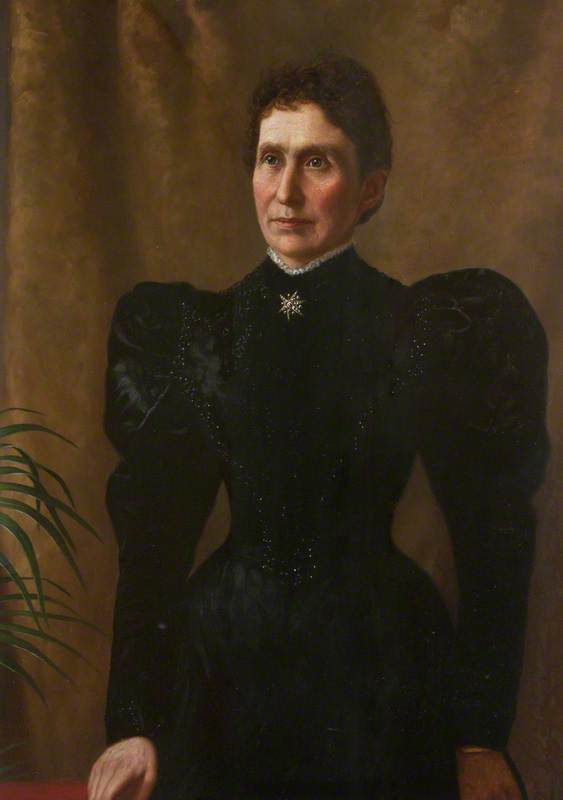
More typical of a portrait of a society hostess was that of Lady Mayoress Pirrie, whose husband, William James Pirrie, was chairman of Harland and Wolff and a leading Liberal at the time, as well as a supporter of Home Rule for Ireland. She was painted by the German-born British artist Hubert von Herkomer, in evening dress and standing beside a vase of roses, with a draped tapestry in the background.
Viscountess Margaret Montgomery Carlisle Pirrie, Lady Mayoress of Belfast (1896–1897)
1902 or before
Hubert von Herkomer (1849–1914) 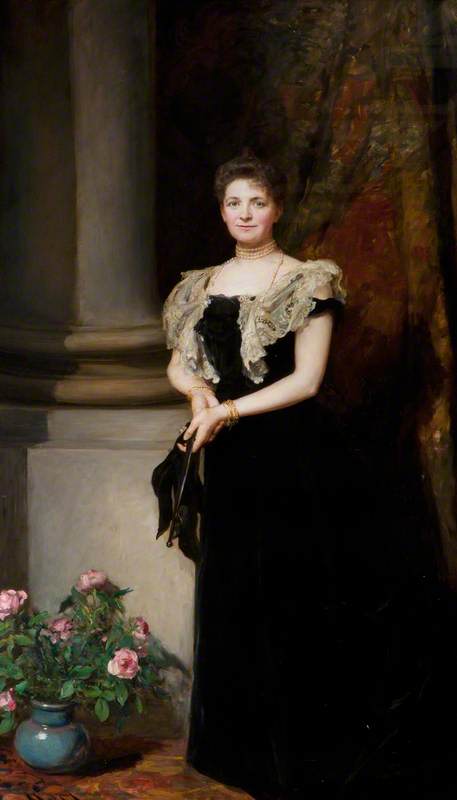
Double portraits of Lord Mayors and Lady Mayoresses are few. Sammy Wilson, of the Democratic Unionist Party, who has never married, named Rhonda Paisley, the daughter of Reverend Ian Paisley, as his Lady Mayoress. They are depicted together in a photographic portrait in the grounds of the City Hall, with a 'Belfast Says No' sign, relating to the campaign against the 1995 Anglo-Irish Agreement, whose wording had been changed to 'Belfast Says Noël' to mark the approach of Christmas. The DUP is a Unionist and national Conservative political party in Northern Ireland, founded in 1971, during the Troubles, by Ian Paisley, who led it for 37 years. The DUP's vision is to maintain and enhance Northern Ireland's constitutional position within the United Kingdom.
The heavy, traditional Mayoral gown, embroidered in gold, remained in favour with sitters. This linked back to the traditional ceremonial gowns that might perhaps be more associated with a British cultural tradition, with which many of the Unionist population identify. The absence of these robes in later paintings echo the cultural shifts within the council chamber. A mace is placed in the chamber, as is the British tradition, to signify the meeting is going on. This used to be brought in by two uniformed men, however, to become more inclusive to the nationalist and republican members, this tradition is no longer continued, although the mace is still carried in front of Council.
There are other references to local history within the portrait collection. Henrietta Rae painted Sir James Johnston in 1918 and his portrait, which was damaged when the City Hall was bombed during the Second World War, is still hung in disrepair in the corridors, as a reminder of the Belfast Blitz which killed so many in the city.
Sir James Johnston, Lord Mayor of Belfast (1917 & 1918)
1918
Henrietta Rae (1859–1928) 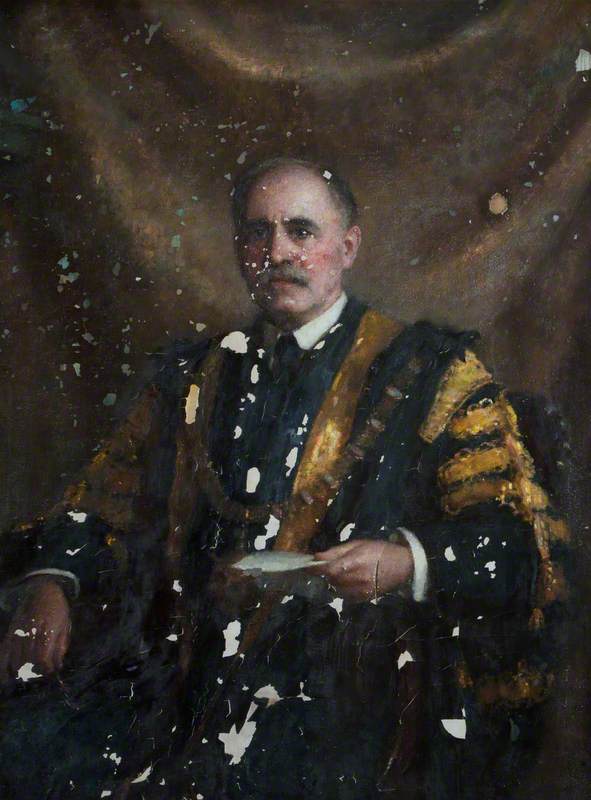
In contrast, there is little sign of the violence of the Troubles unfolding at that time on the streets of Belfast, in Bill Bailie's 1978 portrait of Lord Mayor James Stewart and the Lady Mayoress. She is wearing a long turquoise gown as they stand together, smiling warmly, in the Lord Mayor's Parlour.
In Cedric Wilson's portrait, Lady Mayoress Mrs Frances Smyth, painted in red, sits rather timidly beside her husband, the Reverend Eric Smyth, Lord Mayor from 1995 to 1996, with a Bible open in front of them.
This was the last occasion such double portraits were requested, although some of the more recent portraits of Lord Mayors do include loved ones or references to specific figures. For example, Lord Mayor Danny Baker, of Sinn Féin, an Irish republican and democratic socialist party, holding office in Northern Ireland and the Republic and focusing on Irish unity, was depicted with a photo of his mum beside him, as well as a portrait of Bobby Sands, the first hunger striker to die.
Danny Baker, The Right Honourable, The Lord Mayor of Belfast (2019–2020)
Tony Bell (b.1955) 
More subtly, Martin Morgan, of the Social Democratic and Labour Party, a centre-left, Irish nationalist party founded in 1970, includes the name of his wife, Dympna, in his portrait. The painting also has an evocative use of street maps and tartan in the background, along with a well-known North Belfast landmark, Cave Hill, which features in a number of mayoral portraits.
Martin Morgan, The Right Honorable, The Lord Mayor of Belfast (2003–2004)
2003
Paul Wilson (b.1963) 
Frank McCoubrey, who was Lord Mayor during the coronavirus pandemic lockdowns, when his family could not even visit him in the City Hall, has the initials of his five children incorporated into the floor of the painting, along with social distancing tape and signs. The recently restored chair in the background symbolises the official opening of the first parliament for the new state of Northern Ireland, which was held in the City Hall on 22nd June 1921. The sitter's Unionist affiliation is also shown in the British Legion poppy on his tie.
Frank McCoubrey (b.1967), The Right Honourable, The Lord Mayor of Belfast (2020–2021)
2021
Stephen Johnston (b.1987) 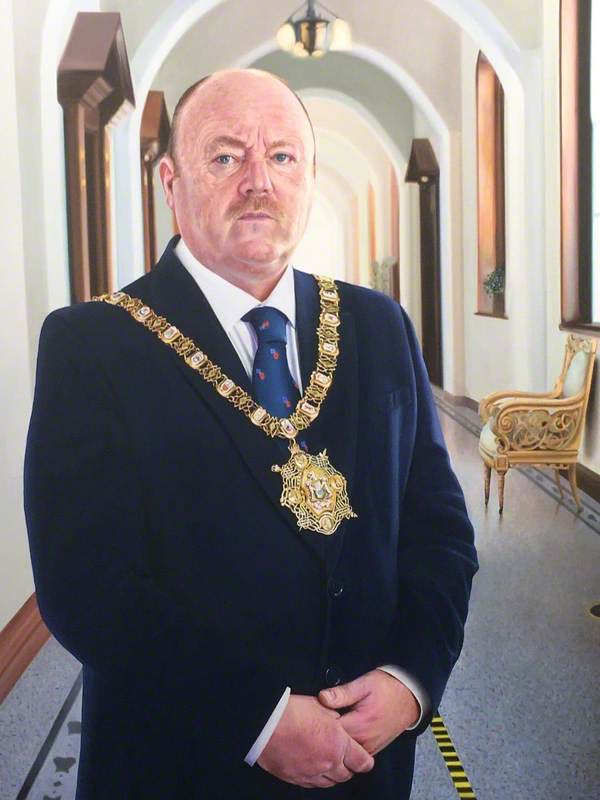
Lord Mayor John Carson, who is depicted by John Piper on the stairs of the City Hall, eventually moved his political career to Westminster. He was a shop owner in Duncairn Gardens, in north Belfast, which was demolished when the sectarian violence in the area resulted in peace lines and an enterprise centre being built, to act as a buffer between the two communities.
John Carson, The Right Honorable, The Lord Mayor of Belfast (1980–1981 & 1985–1986)
1982
Raymond Piper (1923–2007) 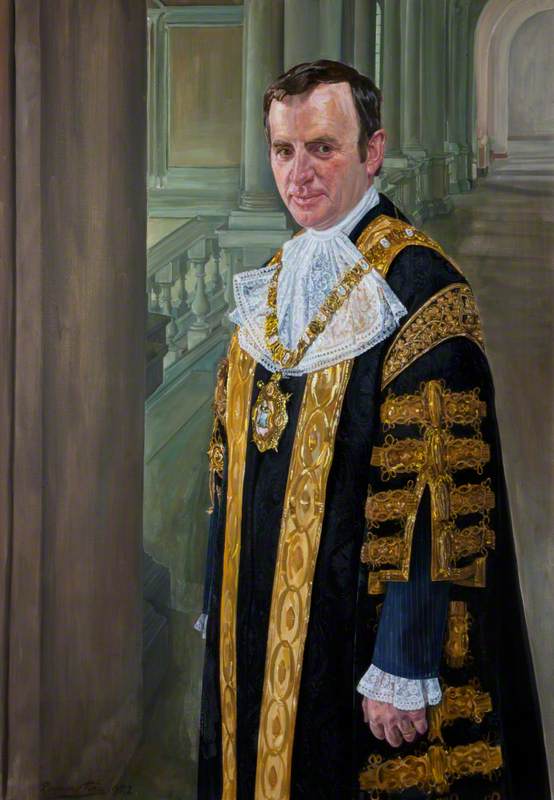
Grace Bannister, of the Ulster Unionist Party, became the first woman Lord Mayor in 1982. Her portrait was painted by Raymond Piper, and was his sixth commission from the City Hall, each of which was located in a different corridor or room within the building. He depicted her in a similar manner to his previous paintings of Unionist Mayors, but in throne-like splendour and with a flourish of blue skirt as a reminder of her gender. By comparison, London had its first female Lord Mayor in 1983, and Dublin in 1939.
Grace Bannister, The Right Honorable, The Lord Mayor of Belfast (1981–1982)
Raymond Piper (1923–2007) 
In 1904, Belfast had its first Jewish Lord Mayor, influential businessman Sir Otto Jaffe, who was born in Germany. It was not, however, until 1996 that Alban Maginness (SDLP) became the first Catholic or Nationalist Mayor. He chose Derek Hill to create his portrait, whose fluid, sketchy painting gave Maginness a relaxed posture and captured a fleeting moment.
Alban Maginness, The Right Honorable, The Lord Mayor of Belfast (1997–1998)
Derek Hill (1916–2000) 
In 2002, Belfast had a Sinn Féin Lord Mayor, Alex Maskey, who had twice been interned without trial before, in 1983, becoming the first Sinn Féin councillor since the 1920s. He chose Robert Ballagh, an Irish painter whose work had engaged with the events of the Troubles, to paint his portrait. Maskey's stance, with his hand in his pocket suggesting the everyman in the street, was intended to connect with his electorate. There are references to the city's diverse population, including, for the first time, the Chinese community, and there was a definite shift in style from this point, with many Lord Mayors bringing a diverse range of symbolism to their portraits.
Alex Maskey, The Right Honorable, The Lord Mayor of Belfast (2002–2003)
Robert Ballagh (b.1943) 
Niall Ó Donnghaile, also of Sinn Féin, became, at 25, the youngest Mayor in the city's history. With MTV coming to Belfast in the same year, the world could see that youth had taken over. Subsequently, Ó Donnghaile moved to the Senate in the Republic of Ireland. He is seated casually with references in the painting to the Short Strand, the area of Belfast from which he comes. The surface is textured to resemble the Victorian red brick in which much of the city was built, and the panel is shaped like the end of the gable wall to reference the city's famous wall murals. Family photographs, and an image of James Connolly, are arranged behind him.
Niall Ó Donnghaile, The Right Honorable, The Lord Mayor of Belfast (2011–2012)
2012
Danny Devenny (b.1954) 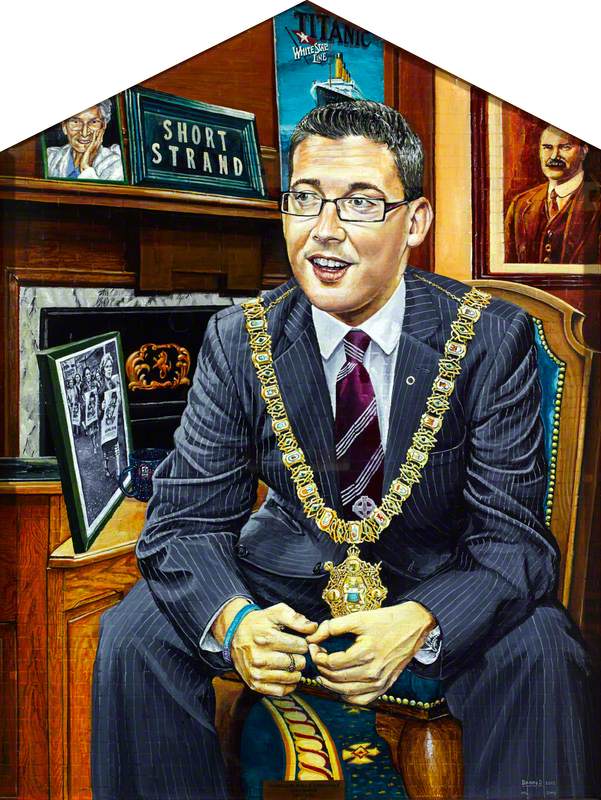
Bricks were also in fashion with Lord Mayor Tom Ekin, who was depicted by Rita Duffy among the backstreets of Belfast. As a humorous gesture, his pocket handkerchief is the shape of an iceberg, a nod to his interest in the Titanic which was, famously, built in the Belfast shipyards. Duffy subsequently tried to arrange for an iceberg to be brought to Belfast.
Councillor Tom Ekin, The Right Honorable, The Lord Mayor of Belfast (2004–2005)
Rita Duffy (b.1959) 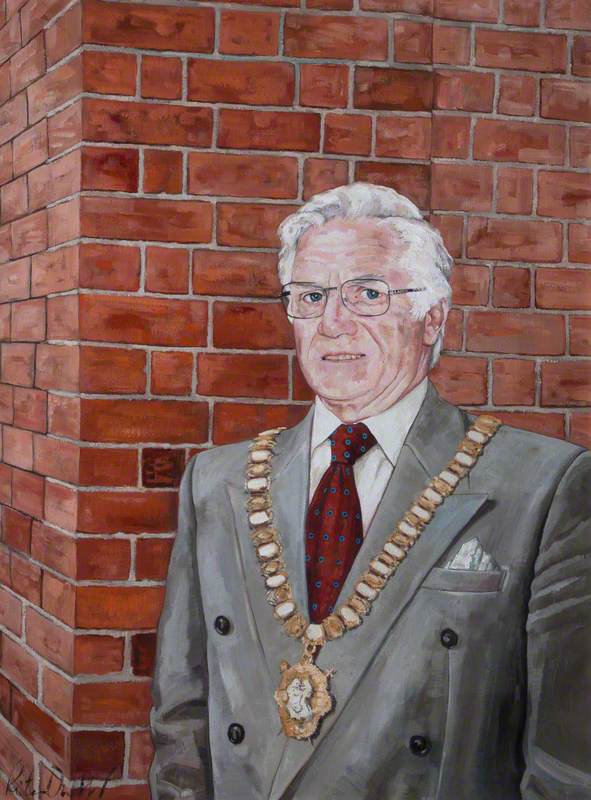
Máirtín Ó Muilleoir, Alex Maskey and Deirdre Hargey, all of Sinn Féin, are depicted without the mayoral chain. Ó Muilleoir also selected Robert Ballagh, and the diamond shape of his portrait is emphasised by the placing of his hands on his hips. An avid marathon runner for charity, Ó Muilleoir is casually dressed in running gear, and his sweatshirt has the Irish words Ospis Leanai Thualsceart Eireann, recognising the Northern Ireland Children's Hospice. He wears two watches, one for his heart rate and the other to keep time.
Máirtín Ó Muilleoir, The Right Honorable, The Lord Mayor of Belfast (2013–2014)
2014
Robert Ballagh (b.1943) 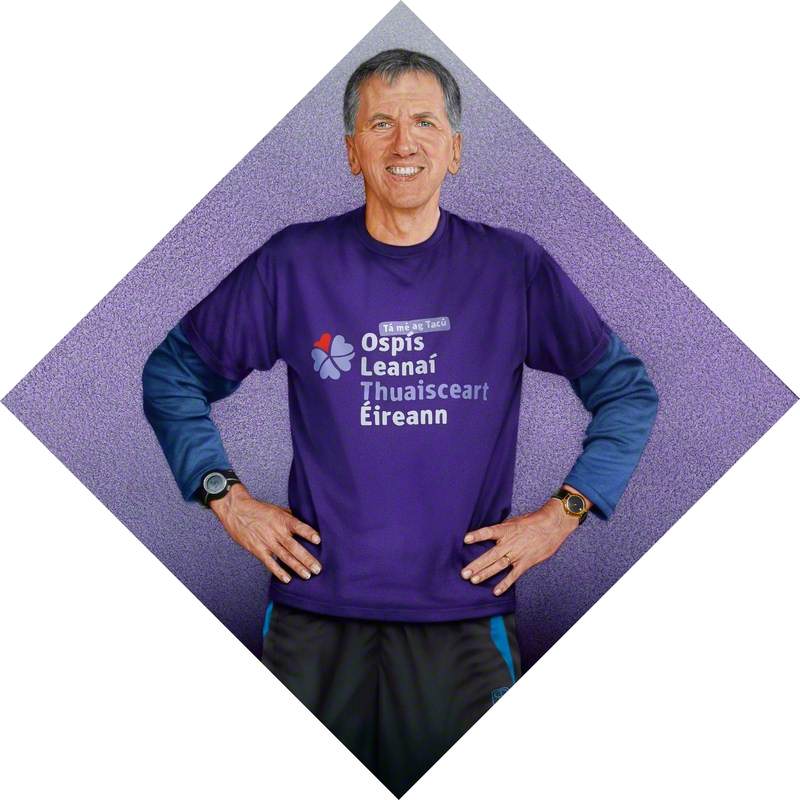
Deirdre Hargey became the first woman Sinn Féin Lord Mayor in 2020; her portrait could sit easily in any home, without anyone realising her position of ceremonial power.
Deirdre Hargey, The Right Honorable, The Lord Mayor of Belfast (2018–2019)
Catherine Creaney (b.1978) 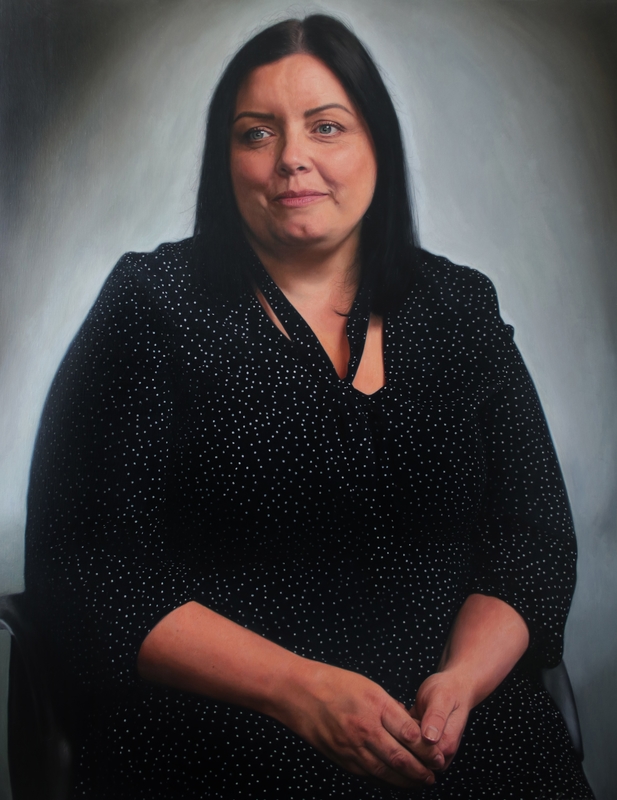
Brian Kingston (UUP) was painted by Colin Davidson, whose sitters have included Queen Elizabeth II, President Clinton, Ed Sheeran and Brad Pitt, to whom he gave painting lessons. Davidson is well known for his large square head portraits, but here he has chosen a more oblong shape. The sitting stance is relaxed yet formal, with Kingston's hands grasping his knees.
Brian Kingston, The Right Honorable, The Lord Mayor of Belfast (2016–2017)
2017
Colin Davidson (b.1968) 
Nuala MacAllister, the Alliance party Lord Major between 2017 and 2018, is depicted with her daughter as a tribute to working mums. This portrait was painted 100 years after women's suffrage, and the wallpaper is painted purple and green in celebration.
Nuala McAllister, The Right Honorable, The Lord Mayor of Belfast (2017–2018)
2018
Jamie Baird (b.1992) and Daniel Nelis (b.1990) 
Nichola Mallon, of the SDLP who went on to be the deputy leader and Minister for infrastructure, was painted by Ian Cumberland while she was pregnant. The Alliance Party's Kate Nicholl was also pregnant at the time of her sittings. The progress of women in politics from Grace Bannister's day is striking. Nicholl was also the first Lord Mayor in over a century to be born outside Europe.
Nichola Mallon, The Right Honorable, The Lord Mayor of Belfast (2014–2015)
2015
Ian Cumberland (b.1983) 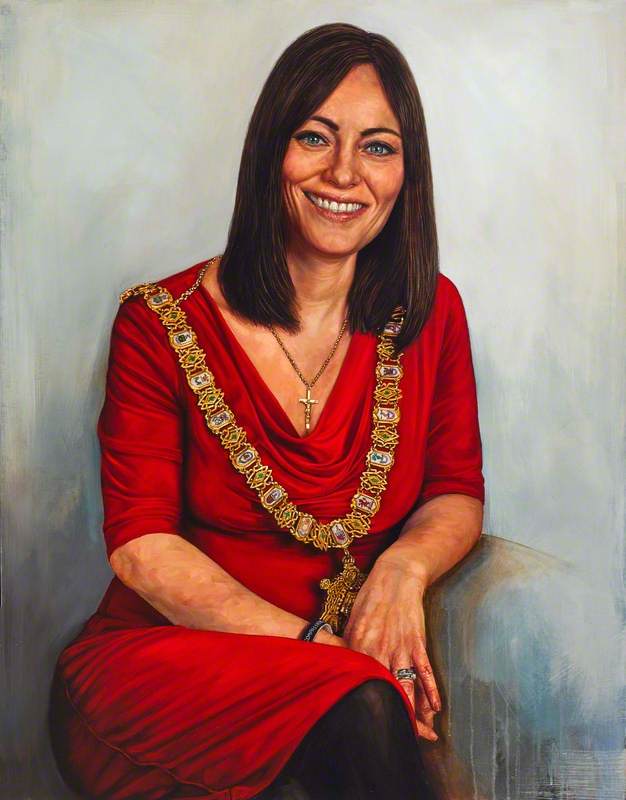
Kate Nicholl, The Right Honourable, The Lord Mayor of Belfast (2021–2022)
Catherine Creaney (b.1978) 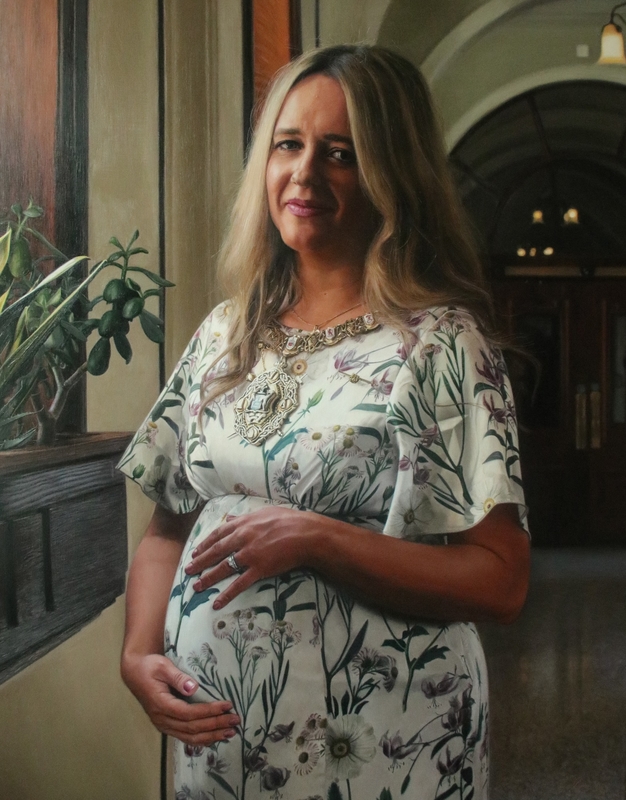
Michael Long, also of the Alliance party, was Lord Mayor for only three weeks and opted for a photograph to cut costs. His wife, Naomi Long, leader of the Alliance party, had previously been Lord Mayor in 2009–2010. Not for them the Mayor and Mayoress portraits of the past.
Naomi Long, The Right Honorable, The Lord Mayor of Belfast (2009–2010)
2010
Nicola Russell (1964–2015) 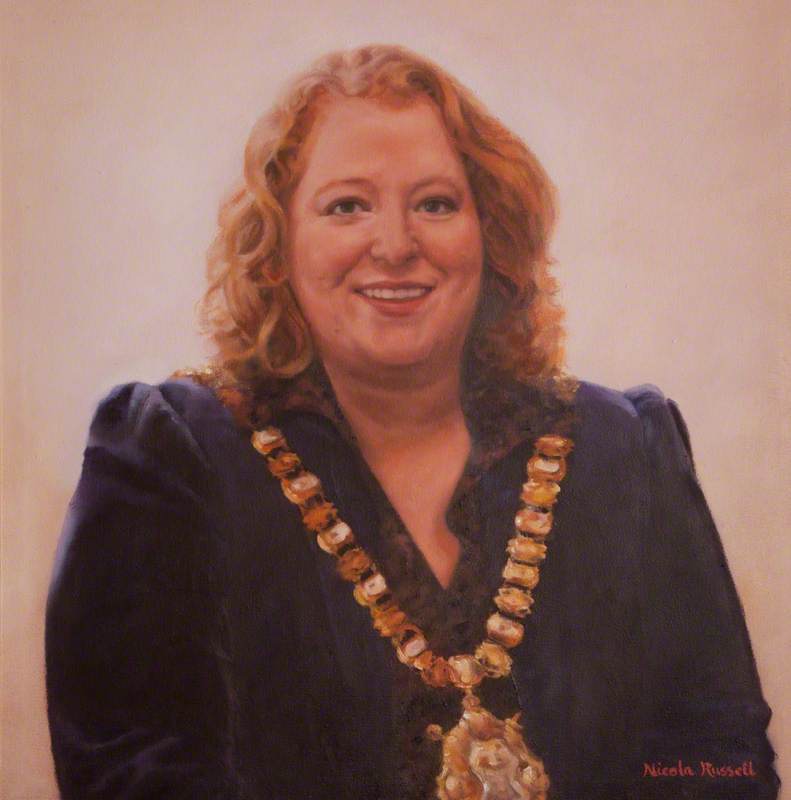
This remarkable series of portraits records a changing artistic tradition that runs in parallel to the story they tell of striking political and social developments. These portraits celebrate the cultural diversity of Belfast, as well as a wide range of political traditions and ambitions that now hang alongside each other in a quiet demonstration of inclusiveness and a reminder of the dialogue that has brought political progress.
Bronagh Lawson, artist, curator and author based in Belfast
This story is supported by Crossland Tankers
